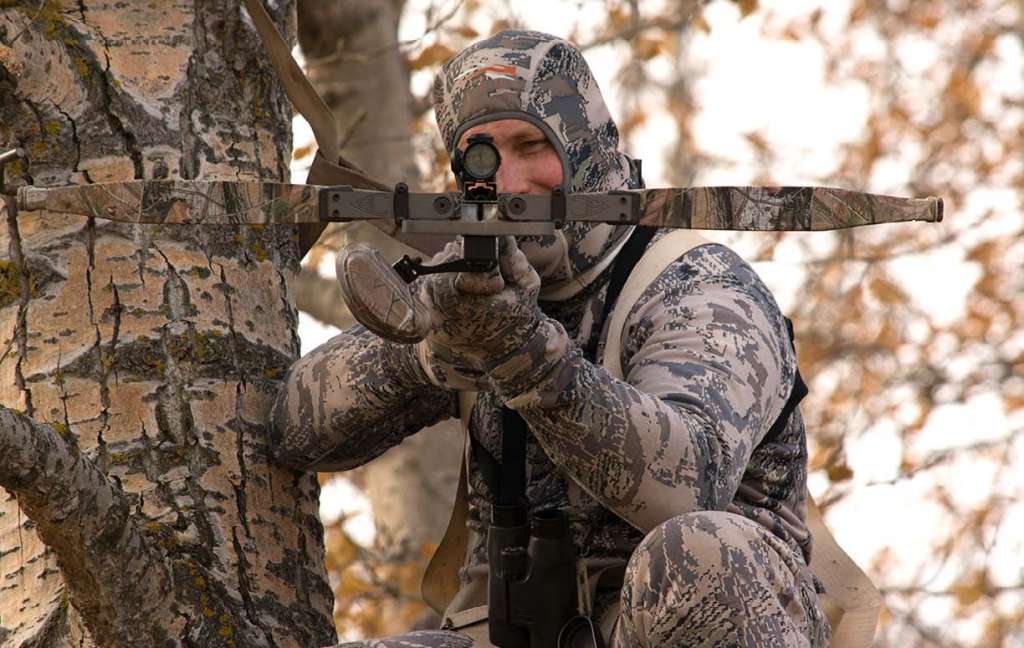It may not be prime time, but you can still have a successful elk hunt well after the peak of the rut.
When it comes to chasing the monarchs of the Rockies, September attracts the majority of hunters. First up are the bowhunters who, eager to get afield in hopes of finding a cooperative bull, like the period between late August and September 10. That’s when the weather is still favorable and when herds are being formed. Then come the bowhunters who enjoy the intense activity of peak rut, which runs from approximately September 10 to 25. About three weeks after that, however, there’s a lesser-known second estrus cycle that bowhunters shouldn’t overlook. That’s when many of the younger cows come into estrus for the first time, along with older cows that didn’t conceive earlier.
While this secondary breeding period produces many good bowhunting opportunities, the same hunting tactics you’d use for the peak rut rarely work. But if you understand how elk behavior changes in October, you can change your approach accordingly. That will let you still fill a tag using a variety of strategies, including calling, stalking and setting up an ambush.

Understanding Behavior
To understand elk behavior during the secondary breeding cycle, you have to consider what’s already happened. During the pre-rut, bulls bugle to attract cows and to build their harems. Then during the peak rut, they only think about two things: mating and fighting. That means they’re bugling to either round up cows or challenge other bulls.
Herd bulls focus on breeding as many cows as possible while keeping other bulls away. Meanwhile, satellite bulls, those mature sub-dominant elk lurking near a herd, try to steal away as many cows as they can without getting whipped in the process. This month of gathering, chasing, fighting and breeding takes a harsh toll on elk, so once it’s over, they’ll rest up until the secondary breeding begins.
By the second estrus, herd bulls are too worn out to fight, but they’re still thinking about cows. But the satellite bulls that didn’t have to defend a harem have more energy. Combined with a month of elevated testosterone, that gives them a little more courage to go after cows, and the result can be fairly chaotic.

Think of it this way: During the peak rut, the bulls are like senior elementary school students picking two teams to play at recess. Everyone knows who the best players are and the players they want on their team, so the picks are straightforward. During the secondary breeding, on the other hand, elk resemble a kindergarten class trying to line up for the first time. Nobody has a clue where to go and they can’t make up their minds. It’s a free-for-all process with no predictable outcome.
As a result, the amount of bugling can be mind- blowing during secondary breeding, with mature bulls constantly sounding off at the slightest hint of a cow in heat. With the large harems mostly broken up, even the younger two- and three-year-old bulls bugle frequently as they find small groups of cows entering estrus. Bugles at this time are associated with bulls following cows that are nearing estrus, but are not quite there yet, as well as bulls trying to attract cows.
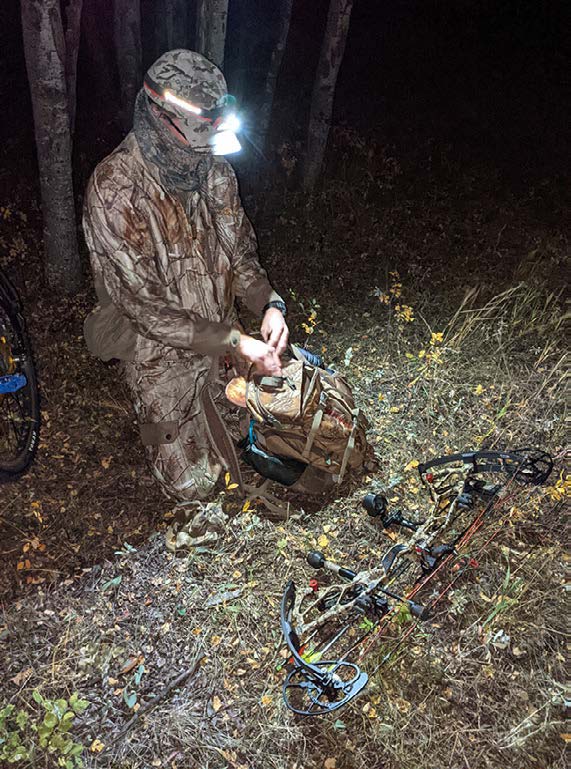
Calling
Although elk seem to be bugling day and night during the second breeding cycle, bulls are not going to come charging toward a challenge bugle. Again, they’re no longer interested in fighting. They’re now scattered throughout the territory, so bugling is more about finding the last remaining cows that require mounting. Also scattered are younger, vocal bulls, along with cows that are expe- riencing estrus—not to mention the constant attention of bulls—for the first time.
Since it’s now all about the ladies, cow calling works wonders during this phase of the rut. Cow calls will attract bulls looking to breed with one of the last remaining cows. It also attracts cows that prefer the safety of the herd rather than being alone.
To imitate numerous cows, I use multiple cow calls, each with a different pitch and tone. Both latex mouth reeds and vibrating reed calls work well during October. With elk being so vocal during secondary breeding, especially with all the bugling, it’s not hard to locate the animals well before first light. This lets you get into position, which is generally in front of where they are headed. Once you’re set up, a series of three or four estrus whines will pique the interest of any nearby bull. Constant whining or chirping will also bring in one or more cows.
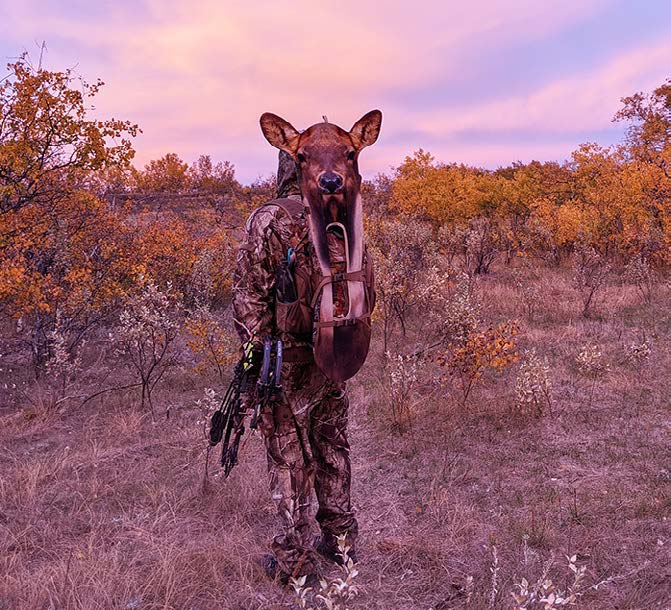
If you don’t hear anything in reply, try a lost-cow call. This will bring in any nearby elk because of their pre-programmed genetic response to help any cows searching for a herd. Cows will often come running in to rescue the lost girl and lead her back to the herd. I’ve also had a few bulls sneak in to scope out the situation. When making a lost-cow call, get ready for an approach from any direction. Elk will usually call back and expect the lost cow to come to them, but if you hold your position and increase the amount of your whining, the elk will eventually commit and come toward you.
Last October offered a perfect example of this tactic in action. I made a lost cow call early one evening and heard multiple cows respond immediately. By stubbornly refusing to go to them and increasing the frequency of my lost-cow call, I eventually spotted all three cresting a small hill and trotting my way. Without hesitation, they came to within 20 meters of my location. While bulls responding to a lost-cow call may be few and far between, this is an excellent way to fill a cow tag.
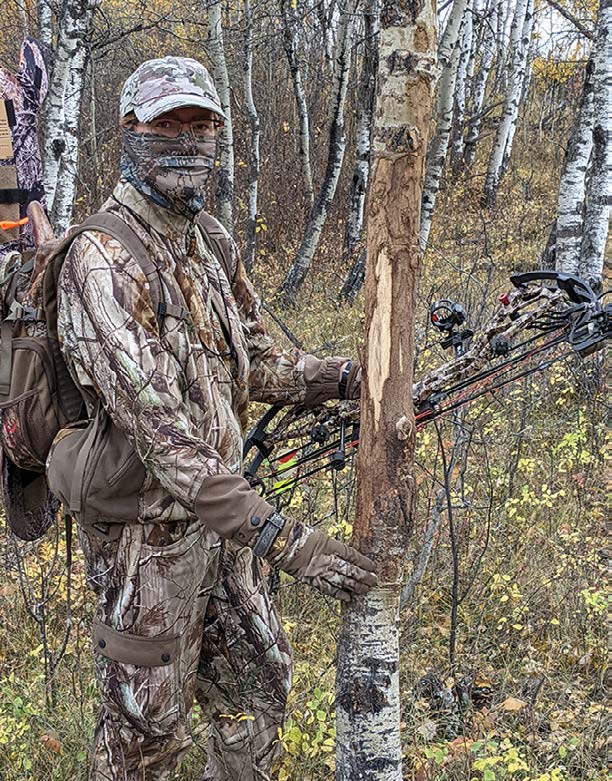
Stalking
Worn-out herd bulls seek solitude after the rut peaks and won’t compete for food the way a large herd of cows and immature bulls will. The more active a bull was during the peak rut, the tougher he’ll be to find in October. And it gets harder and harder as the days get shorter. Big boys like to hide out in the deep, dark timber or at higher elevations. If you’re looking for these old beasts, your best chance is to go deep into elk country, where they re-energize for winter.
South-facing, windswept slopes and meadows, typically with thick, dark cover close by, provide good food for bulls, even when it snows. Elk are big, bright animals that can be seen from a distance on these sparsely wooded slopes and meadows. So, once you spot elk from afar, the first step in setting up a stalk is to observe where they are seeking cover. After that, play the wind as usual, as well as any thermal activity if it’s hilly—and go slowly.
With their energy levels quite low, these bulls won’t be very active, so you should have plenty of time to close the distance.
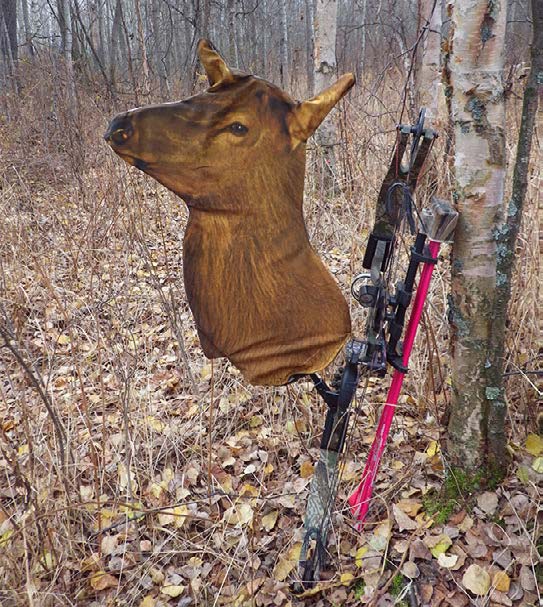
Ambushing
Through the entire rut period, elk still need bedding for cover and security, along with food and water. Many post- rut elk have completed their breeding and are worn out. They’re mostly interested in piling on the pounds before winter. That means they continue to move in and out of bedding areas, usually following a variety of trails, so it requires a bit of luck to intercept them.
Start by looking for quality food sources. Usually by this time, there have been many frosts and most, if not all crops have been harvested. That’s when alfalfa fields tend to become the preferred feed, and elk will travel for many kilometers during dusk and dawn to find it. Elk also like creek bottoms and drainages, which provide lush food late into the fall, and usually some cover.

Once you’ve determined the elks’ food source, it’s simply a matter of ambushing them on their travel routes. Again, there can be many trails to choose from, so to increase your odds of success, look for ones that lead to a natural funnel in the topography. Then play the wind and set up with some cover between you and the trails.
Placing a treestand along a game trail is also a great tactic. Unlike deer, elk just aren’t programmed to look upward for danger. They also make a lot of noise coming through the bush, and the more elk, the more noise. I’ve found that staying elevated to avoid getting winded is an effective tactic throughout the post-rut period, right into early winter. Even in the most promising spot, however, ambushing requires patience and a willingness to stick around for a few days.
During my years of hunting buglers, I’ve harvested post-rut elk by calling, stalking and ambushing them from the ground, but my favorite tactic is a treestand ambush. If you are hearing and seeing elk, and you’ve located the trails they use, it’s simply a matter of time before an elk cooperates and there’s an opportunity to take it.
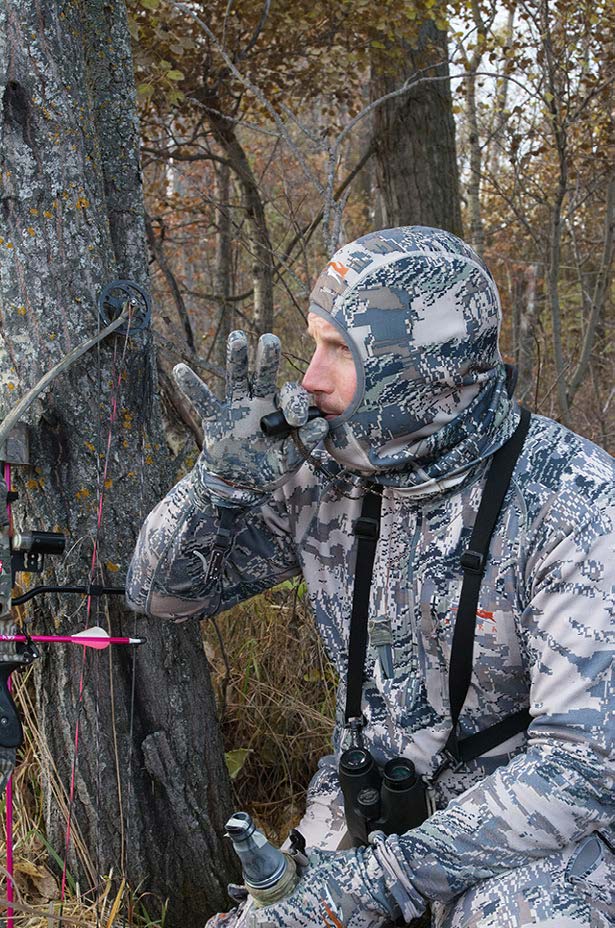
Think About Moon Phases
Many hunters plan their hunts around the moon phases. Some totally avoid hunting during a full moon, but I think this simply limits your time in the field—and your hunting opportunities.
Moon phases do indeed affect elk behavior, but if you understand how, you can tweak your strategies accordingly. A full moon means plenty of light during the night, which increases elk activity, including breeding. To capitalize on this, you must hunt right up until shooting light ends and be ready and waiting when legal light returns in the morning. Just keep in mind that this tactic often means many hours of walking in the dark.
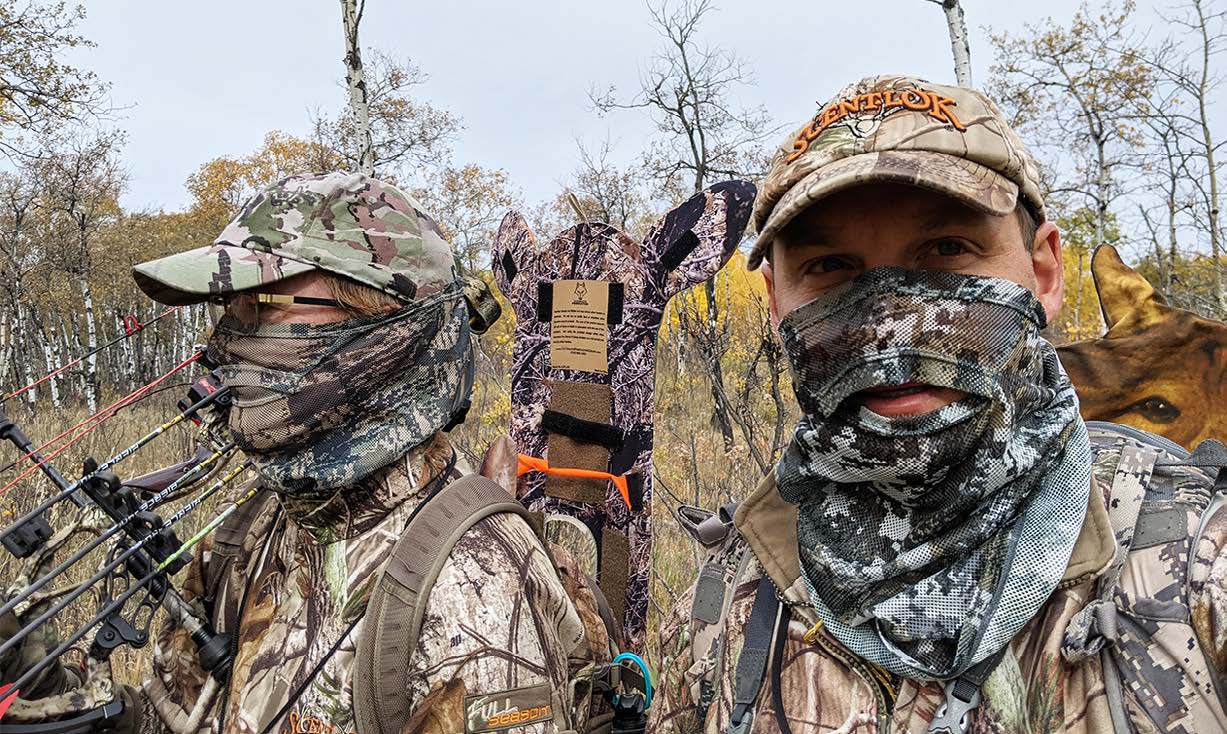
GEAR USED:
Bear Archery Redemption compound bow
Rocky Mountain Mouth reed call
Elk reed call
Ultimate Predator Stalker Decoy
Heads Up Cow Elk Decoy
Montana Elk Decoys
Excalibur Crossbows
Trophy Ridge Hex Light Quiver
Scentlok full-season clothing
Per our affiliate disclosure, we may earn revenue from the products available on this page. To learn more about how we test gear, click here.





